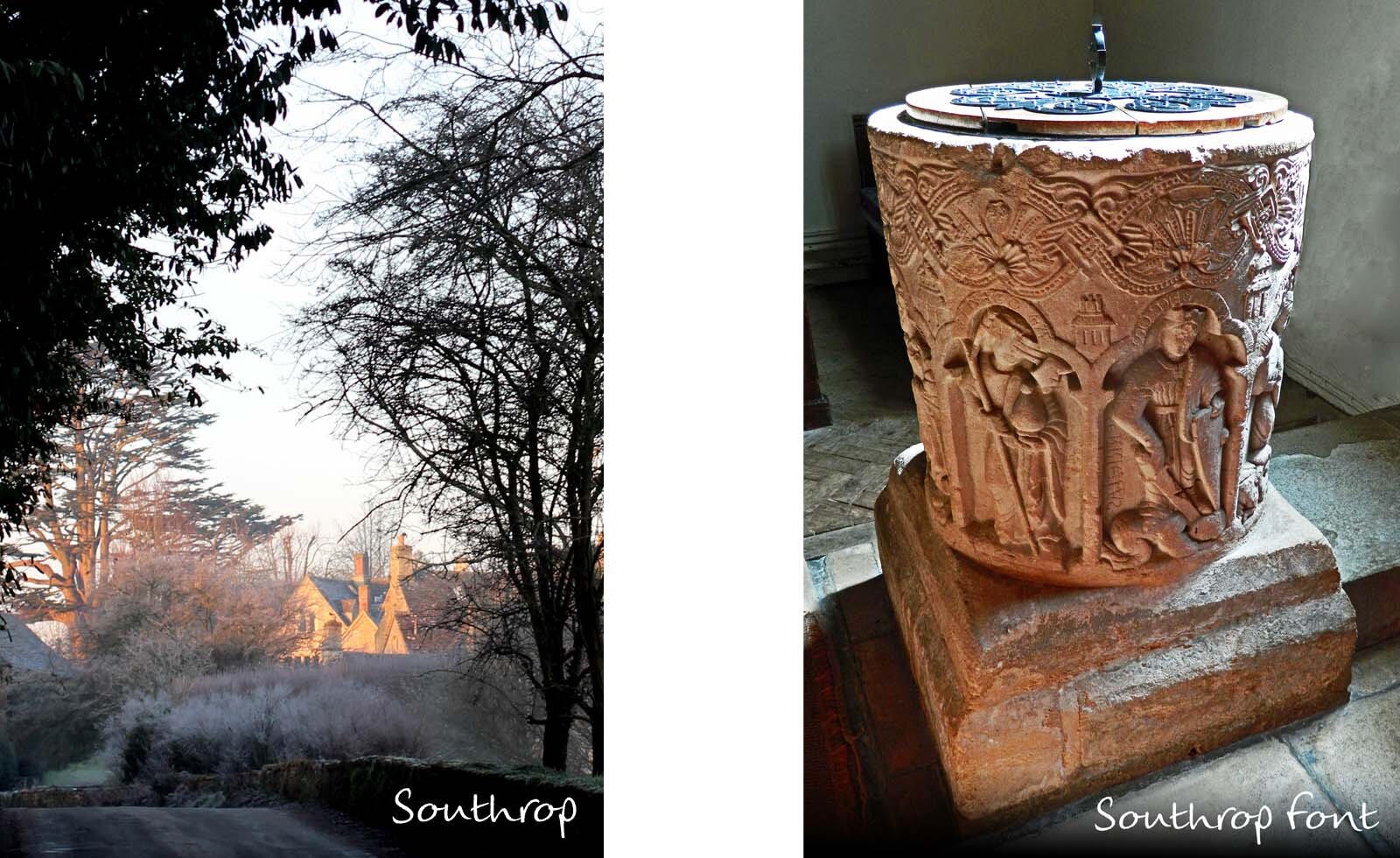Thyme Travels into History Part Three - The Tudors
There is much evidence of medieval farming around Southrop. Farming techniques then involved piling up the soil in long rows known as ‘ridge and furrow’. The purpose of it being that in a dry year, water would collect in the lower furrows making the soil arable, and in a wet year, the upper part – the ridge – would be drier for the same reason. This guaranteed that whatever the weather, crops would grow well in some part of field. They used oxen to pull their ploughs, horses being used mainly for military purposes. On heavier soils, farmers could use up to eight oxen, yoked together two abreast. Many of these fields can still be clearly seen today, some just outside Southrop on the footpath to Eastleach, although they are now grassed over and grazed.
Following the Black Death, the newly created farmers kept a keen eye on their finances and were aware that sheep grazing was an easier way to make money than the arduous tilling of the soil. In the Cotswolds the wool trade flourished and the wealth created led to the construction of the wonderful stone buildings that cover the area. Southrop, being set between the sheep strewn hills and the rich soils of the Leach water meadows, benefited from both.
The Dissolution of the Monasteries was a set of administrative and legal processes by which Henry VIII disbanded Catholic monasteries, priories, convents and friaries and appropriated their income and assets. It was one of the most revolutionary events in English history. There were nearly 900 religious houses in England, around 260 for monks, 300 for regular canons, as well as 142 nunneries and 183 friaries. They housed some 12,000 people in total: one adult man in fifty was in religious orders of a total population of 2¾ million.
Southrop was not immune from Henry’s men at arms. The font was hidden by the parishioners by sealing it in stone in the south western doorway. It then remained hidden until it was uncovered during restoration work by John Keble, curate of Southrop in the 19th century.
As a result of the Dissolution, in 1548 Philibert's Court, Grayes Court and the manor estate were taken over by the Duchy of Lancaster, and were run by leaseholders. One of whom was Sir Thomas Conway, a gentleman usher to Queen Elizabeth I. He had a difficult relationship with his tenant farmers and tried diligently to get them to agree to an inclosure of the open field system, but was successfully opposed in court by them. His letters “to his dear friend Mr. Byrd” tell the story:
“I must have a [Southrop Manorial] Court kepte for the tryinge of many controversies which are now in question, and many straynge customes wch the tennantes make clayme unto that [which] cannot be decided but by a Courte and Court Rules.”
“I am now cum home to Southerope and am very desirous to keepe a Courte as soone as I coulde. Wherefore I hartly praye you to appoynte a sertayne daye, that I may cause the tennantes to have lawfull warning according to the Statute, for you know they are very wrangling fellowes.”
This is the third of six installments of Jerry's history of Southrop, the manor, the farm and its buildings.
If you would like to purchase a copy of his book, please contact us.
'Ridge & Furrow' Image Credit Hamish Fenton


